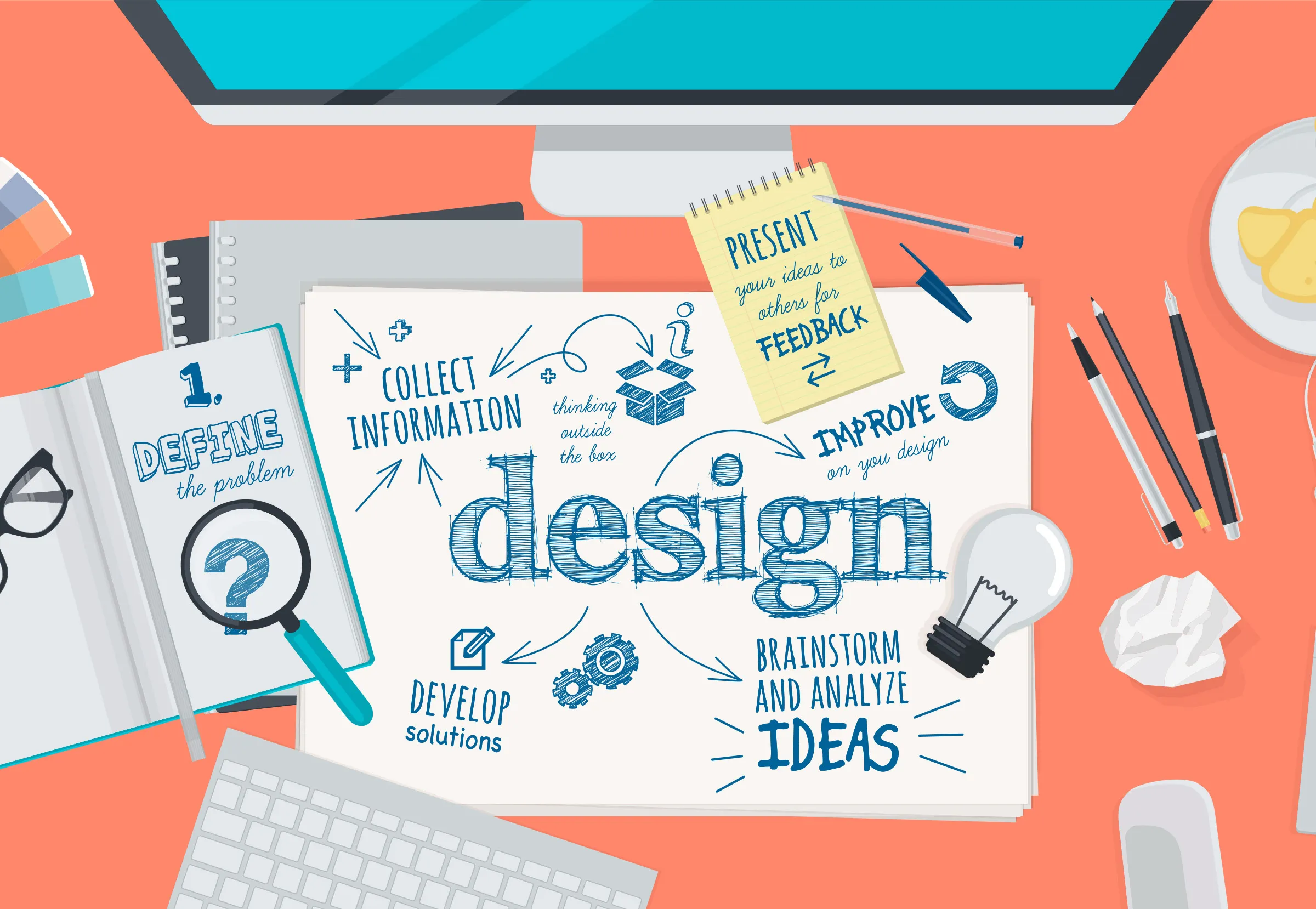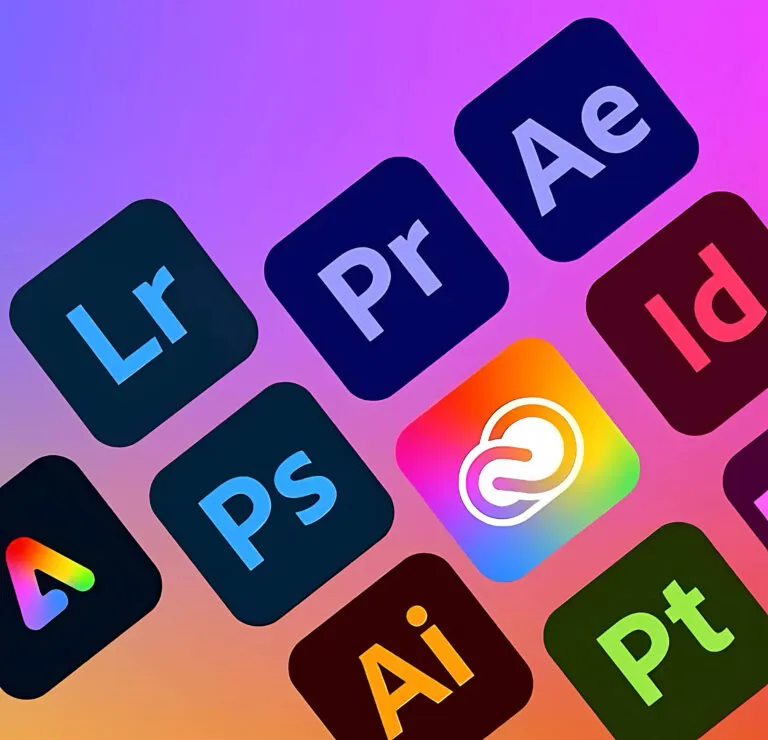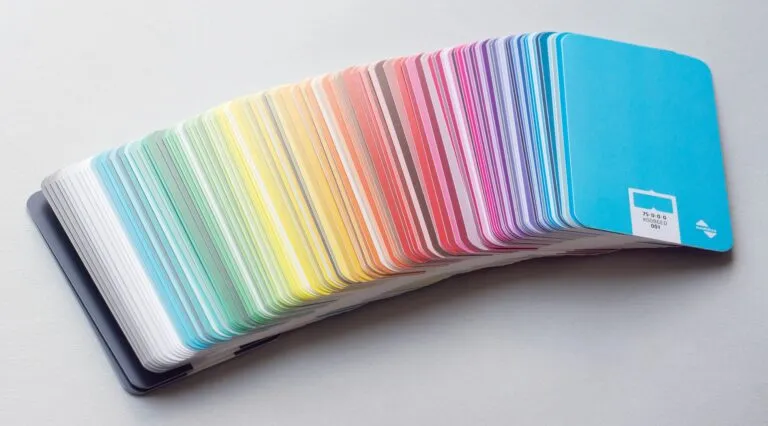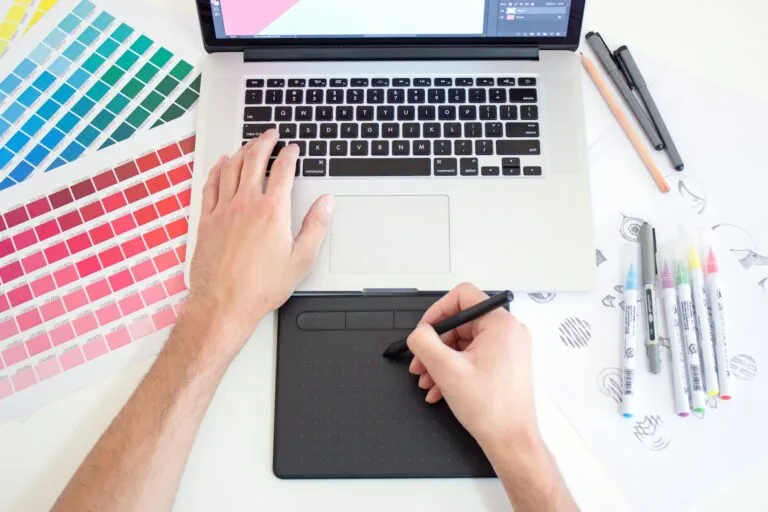7 Essential Design Tips
We all know that beauty is in the eye of the beholder, but there are some essential rules and design considerations that every designer should follow.
1. Plan first
Our first design tip comes into play before you even embark on a project. Before beginning, it’s important to take some time to seek inspiration and collate ideas. Ultimately, you’ll end up with a more well-thought-out and coherent result.
Planning also gives you a chance to think outside the box: gathering ideas that move beyond the same old tired design standards or clichés. It is, after all, what the mood board was invented for. Don’t be tempted to cut this corner – even on the smallest project. Your early work to clarify ideas and find the right tone and style will pay off.
2. Keep it simple
Steve Jobs said: “Simple can be harder than complex: You have to work hard to get your thinking clean to make it simple. But it’s worth it in the end because once you get there, you can move mountains.”
Simplicity is the mantra of not only Jobs, but many revolutionary and inspirational designers – and it can be the enemy of the beginner. As you learn a new discipline it can be all too easy to keep adding design details.
Try this design tip instead: as you approach the completion of a project resist the temptation to add one more thing – and aim to take away one more thing instead.
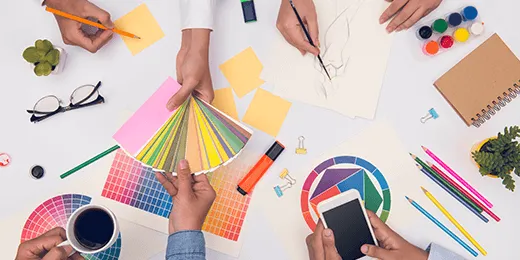
3. Set your standards
For every project, choose your colours before you begin. Our design tip: you need 1-3 main colours backed up by 1-3 supplementary colours which all complement each other. You can use different tones of the same colour for contrast by adjusting brightness and transparency.
Standards don’t stop at fonts and colours though. On multi-page projects, create your templates and specify font and design styles before you begin. Taking the time to do this first can be frustrating when you want to get stuck in straight away, but it will be worth the effort to ensure uniformity and, especially, if you need to adjust things later.
4. For font’s sake
This one is more of a series of design tips. Typefaces impact mood decisively.
Choose the right ones for your project: rounder for a friendly tone, serifs for sophistication, hard-edged sans serifs for a solid, strong feel.
Align your text – anchoring it with a line or embellishment is a useful way to avoid the problem of “floating” text.
Think about contrast if you are overlaying text over a background image: choose a colour that creates real contrast so text stands out. If necessary, adjust the brightness of your background image to ensure you don’t lose impact.
While selecting one contrasting font for headers can be very effective, don’t be tempted to mix too many typefaces – it confuses the eye and makes text harder to read. If the font family you’re using has multiple variants, that can be a great way to keep options open without losing a uniform feel. Keep it simple!
5. Play with scale
It takes a confident designer to play with scale – but it can have dramatic results. Do experiment with contrasting scale for type, shapes or images; it’s a great way to add emphasis to different elements and visual impact to your work.
6. White space is your friend
Let the elements in your design breathe by leaving pockets of white space around them.
It may seem counterintuitive, but keeping things minimal will have more visual impact than cluttering up your composition.
7. Take a break!
Recharge your batteries every now and then. Coming back to your work with “fresh eyes” helps you to be more critical and see what is needed to deliver maximum impact. A walk round the block might suffice, and a few days even better. Try to avoid the situation where you’re rushing work out of the door.
Our final design tip: allowing yourself a few days between completion and review can be very beneficial.
Platform design tips
These are our most essential and practical design tips, but you can learn more software specific design skills on our range of design courses.
Browse our course catalogue here.
